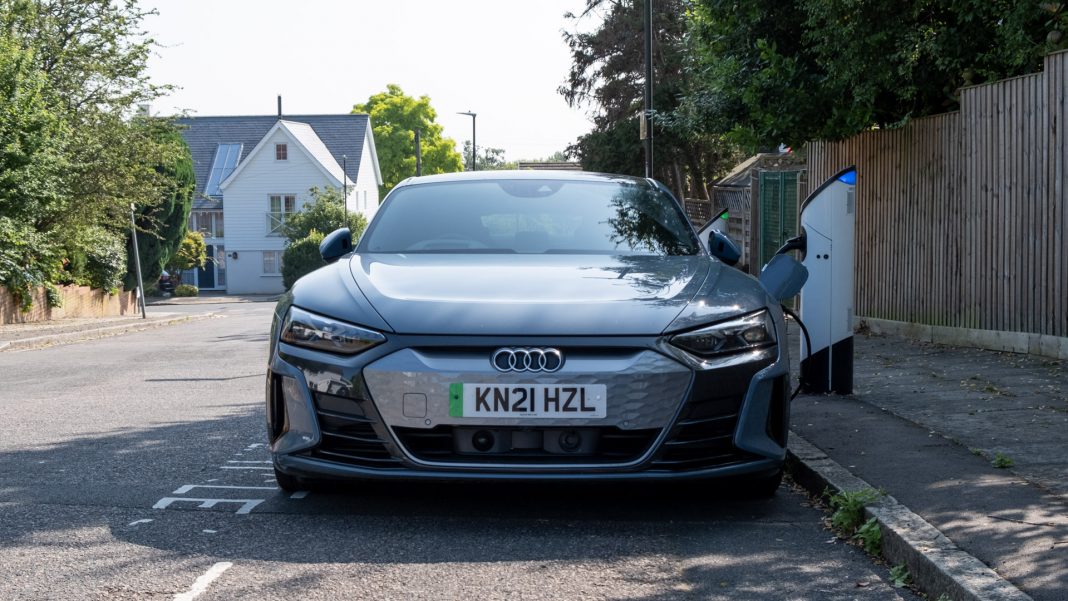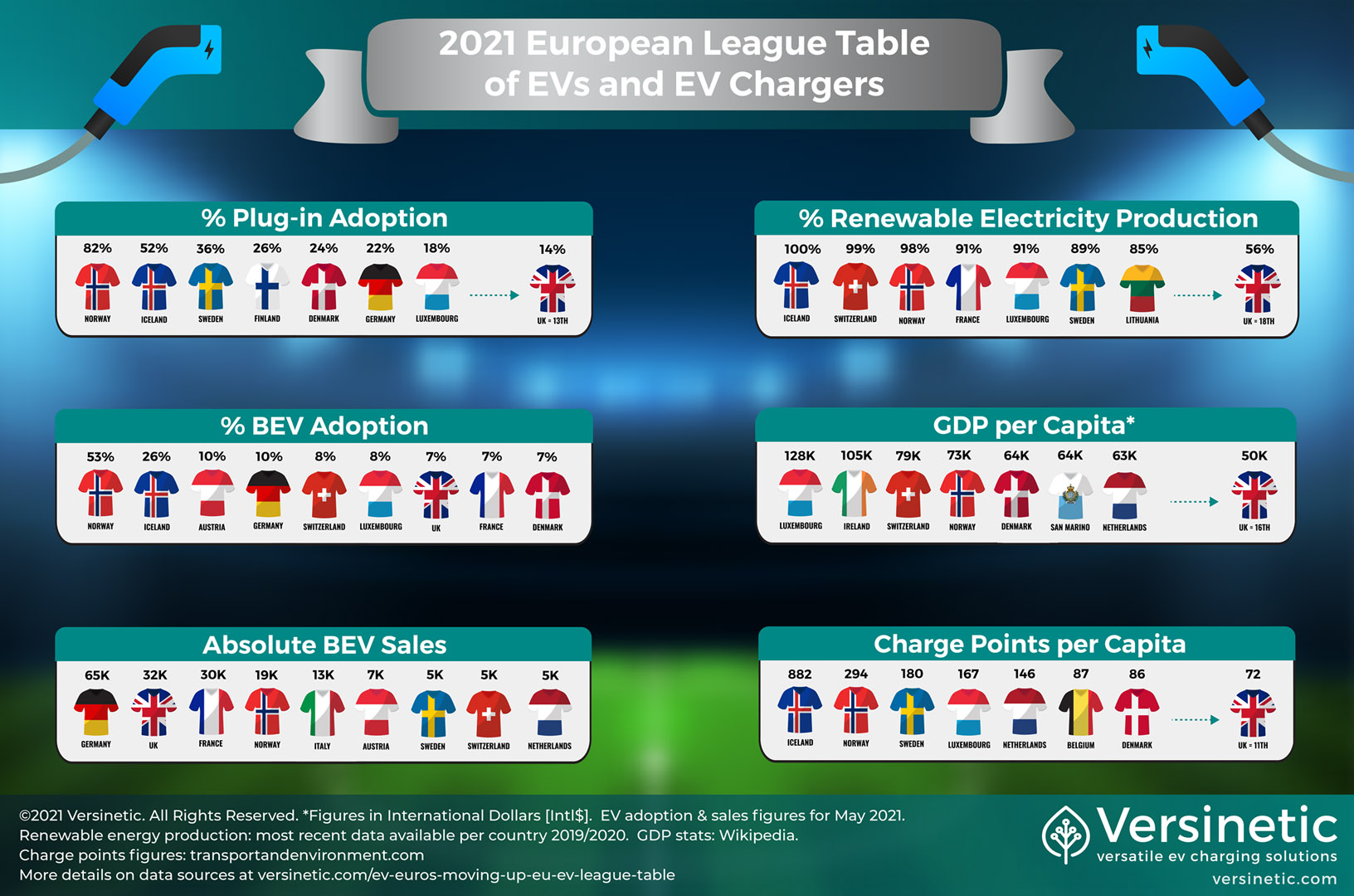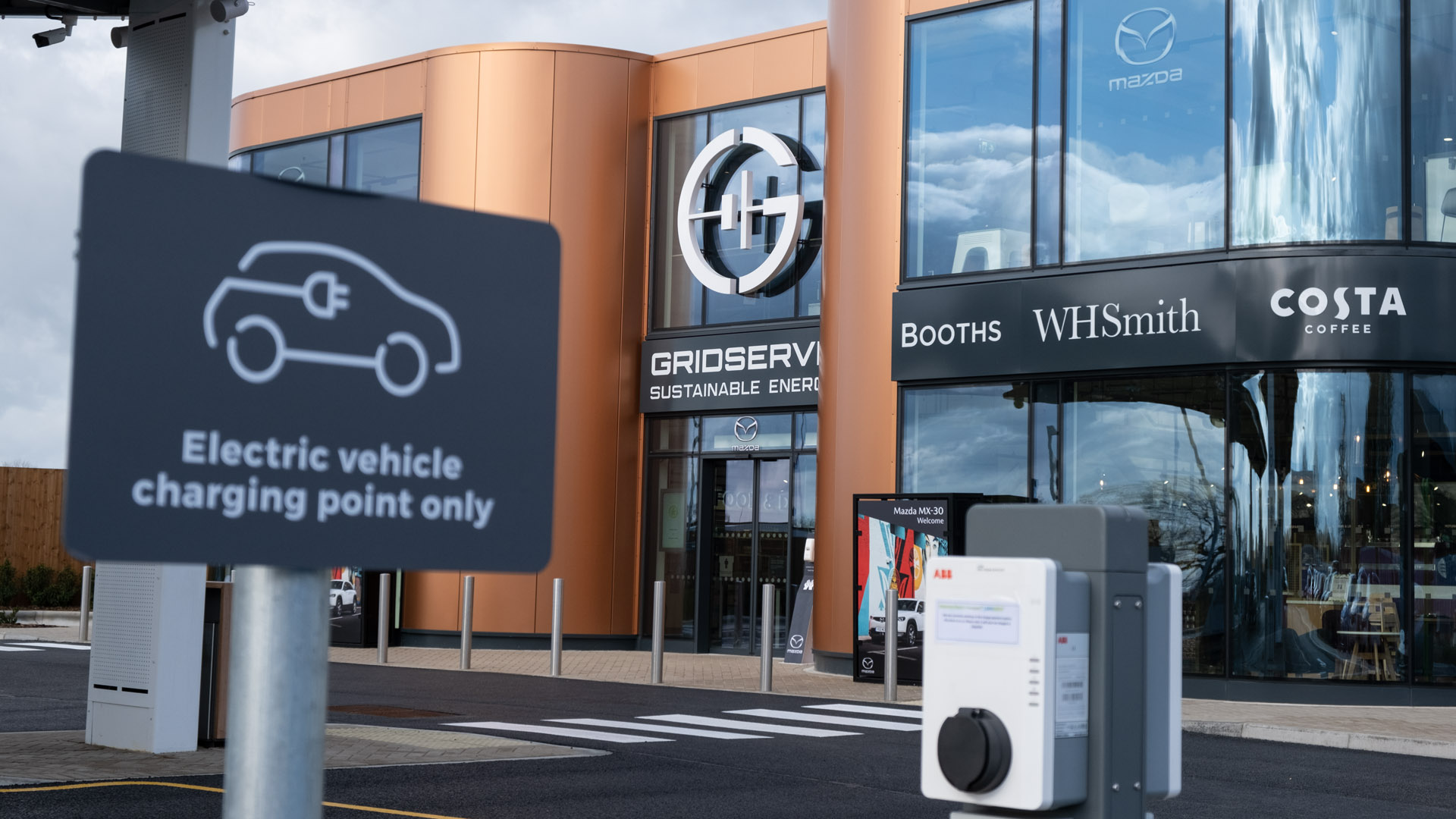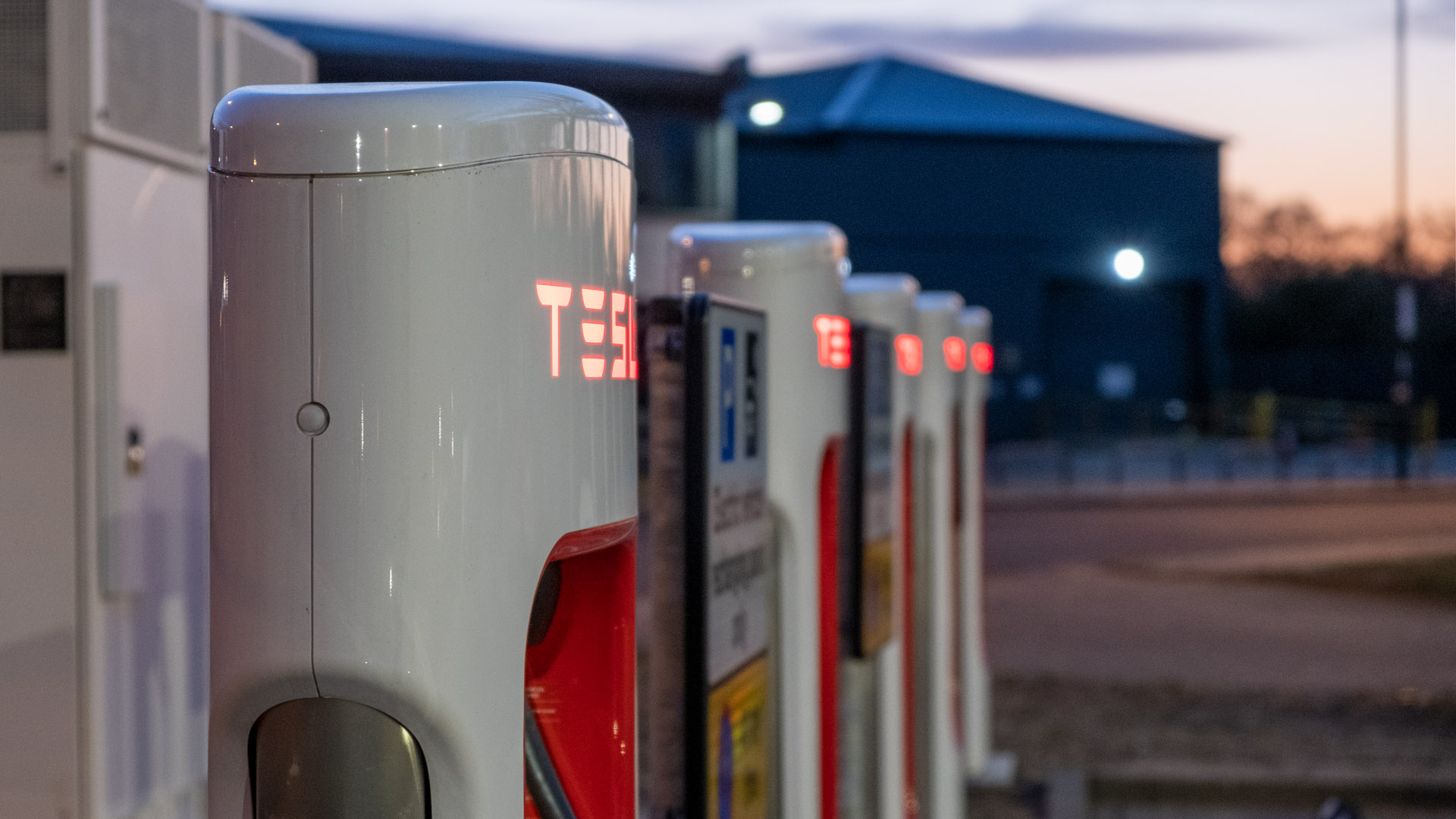In the West, Europe is leading the electric vehicle revolution, while China is pioneering EV technologies in the East; so where does that leave the UK in the race to become green?
Thanks to some research carried out by EV charging consultancy firm, Versinetic, we can assess the UK’s position among its European counterparts, and further, understand how the country can improve its position in the near future. To hone into the details, TotallyEV caught up with Dunstan Power, Director at Versinetic.
Read next: Skoda Enyaq iV review: The Volkswagen ID.4 alternative
Is zero-carbon a factor in EV adoption?
If we look at the leaders in EV adoption, we find that Norway is about 98% renewable, and Sweden has over 80% renewable or nuclear electricity with wind power increasing rapidly. Looking at other countries in Europe, however, the correlation starts to break down.
France is 93% zero-carbon, but has an EV adoption rate similar to that of the UK. The Netherlands is also in the middle of the EV adoption league, just below the UK, but astoundingly the country is near the bottom of the zero-carbon energy for countries in the EU27.
Buy a car phone mount on Amazon (Affiliate)
How do government incentives affect EV take up?
They definitely make a difference. When the UK government, for example, cut incentives for plug-in hybrid electric vehicles (PHEVs) from £2.5K per car to zero, the market quickly shifted from being PHEV-dominated to being battery electric vehicle (BEV)-dominated. This was mainly due to a large number of company PHEVs that were being bought for the grant; however, the uptake in home chargers wasn’t anywhere near as large, meaning company car owners were likely driving their vehicles in non-electric mode, and as such were emitting more CO2 into the atmosphere over the equivalent combustion car.
There are similar incentives across Europe including purchase grants of around €4K to €6K; vehicle tax is waived and parking costs are sometimes reduced.
Many countries have brought in Bonus Malus or “Polluter Pays” penalties for buying or driving combustion cars. In the UK, of course, we have an additional vehicle tax for high-polluting cars and a carbon tax for fuels.
Thankfully, the reduced government incentives in the UK are being compensated as BEVs have become more cost-competitive with combustion cars (and particularly self-charging hybrids) along with PCP purchasing schemes whose monthly costs now overlap with comparable combustion cars.
Read next: Audi e-tron review: Best premium all-electric SUV?
What impact will CO2 targets have?
The tough EU targets for vehicle CO2 emissions have certainly driven higher plug-in adoption rates across Europe. CO2 emissions targets are aimed at manufacturers rather than countries. From a manufacturer’s viewpoint, however, this is likely to mean a greater push from automakers to countries with the largest potential EV markets: Germany, France and the UK.
Although the UK comes 13th out of the 30 European countries for Plug-in EV adoption rates (just behind France and lagging behind Germany in 6th place), the UK comes 10th in terms of combined CO2 emissions of new cars (with France at 12th, and Germany in 5th); 7th in terms of BEVs (just ahead of France with Germany in 4th); but where the UK really shines is in the number of BEV sales, where the country ranks 2nd, with Germany in first place and France in third.
This means that if manufacturers want to reduce CO2 emissions by opting for the low-hanging fruit, they will need to concentrate on the biggest markets – namely Germany, France and the UK. In that sense, even though the UK is no longer a member of the European Union, it’s still central to EU emissions goals.
Read next: Mini Electric review: Style over substance?
How much does GDP influence EV take up?
EVs have been expensive so it makes sense that their uptake relates to GDP. It’s true there is a general trend towards higher EV adoption and GDP. There are a number of outliers, however, such as Luxembourg and Ireland, with high GDP and low adoption rates; or Bulgaria and Portugal which have a low GDP, but relatively high EV adoption.
As EVs reach price parity with other technologies, combustion vehicles start to lose their economy of scale. Counterintuitively, fuel prices will continue to go up even as demand falls against supply because the maintenance cost of existing supply lines and equipment will become increasingly dominant. This makes EVs increasingly competitive and, consequently, GDP is less of an issue.
Read next: Smart Charging, Renewable Energy and the Future of EVs
Are there any other useful ways of gauging EV take-up?
Surprisingly, it turns out that charge points themselves provide a really effective metric for EV adoption. This was discovered by one of Versinetic’s engineers by chance whilst reading a Transport & Environment paper on European EV infrastructure, which interestingly, amongst other things, covers the number of charging points per capita.
The population, as a whole, won’t be able to tell what the relationship between the number of EVs and charging points is (until they start to see large queues of EVs at charging points), but they can tell how many charging points there are in their environment.
The UK is pretty close to Germany and France with the number of charging points generally tracking EV adoption. Norway has 32.4 EVs per public charging point. Per capita though, it has a phenomenal 294 charging points per 100K inhabitants. Sweden similarly is ahead of the curve when it comes to both EVs per Public Charging point and also charging points per head of population.
Another outlier, Portugal, a relatively low-income EU country, has a high number of charging points per 100,000 inhabitants, just below the UK.
Read next: Hyundai Kona Electric review: Kia e-Niro alternative?
Which of these factors make the biggest difference to increasing EV adoption in the UK?
To some degree, all of the variables mentioned we might expect, do. Unlike Norway, the UK doesn’t have an easily exploitable natural source of electricity, where it’ll take some time for the country’s renewable resources to reach their potential. This is because they’ll reflect the shift in how we use all our energy, rather than the rate of EV adoption.
Government incentives and EU emissions directives also impact EV adoption. However, as these measures are broadly similar throughout Europe, it’s unlikely that the UK’s position will be hugely affected by these means.
Similarly, a country’s wealth has an effect on EV uptake, where there’s not likely to be a huge shift in the short-term in the UK’s relative GDP – the Brexit effect notwithstanding – and the increasing competitiveness and sales models for EVs will, we anticipate, start to erode these advantages in the near term.
A stand-out mechanism that communities, municipalities and businesses can exploit as a means of increasing EV adoption is the uptake of EV charging points.
Increased visibility of charging points normalises the acceptance of EVs and displaces anxiety about running out of charge. In the long-term, it also leads to cheaper EVs in a wider range of market segments – convenient for the design engineers at Versinetic, since that’s exactly what the company is doing at the moment, by developing new-gen public EV chargers.
How do you think the UK stacks up to its European rivals? Let us know in the comments section below or on social media; we’re on: YouTube, Instagram, Facebook, Twitter and LinkedIn.










